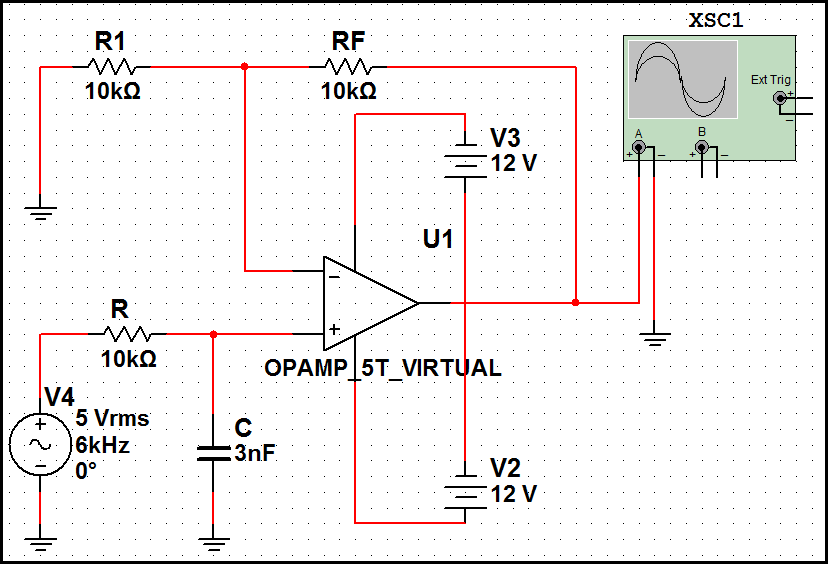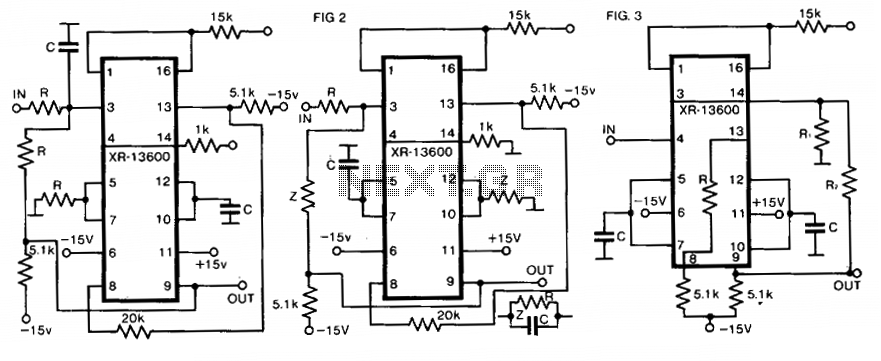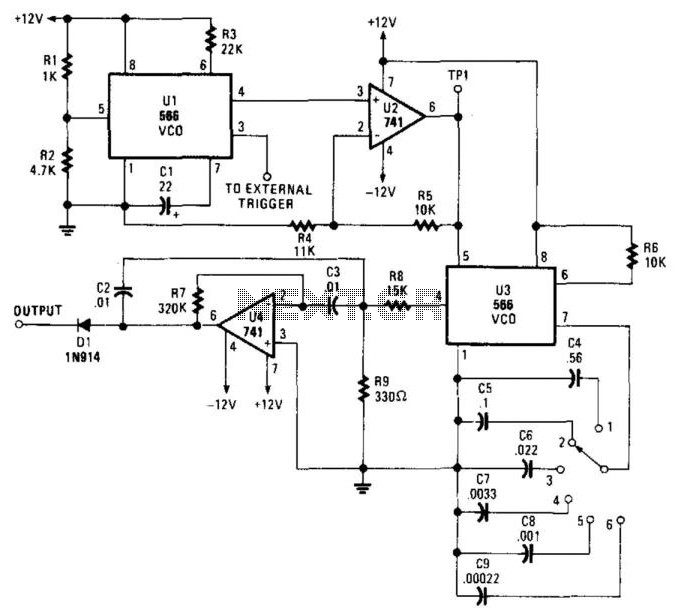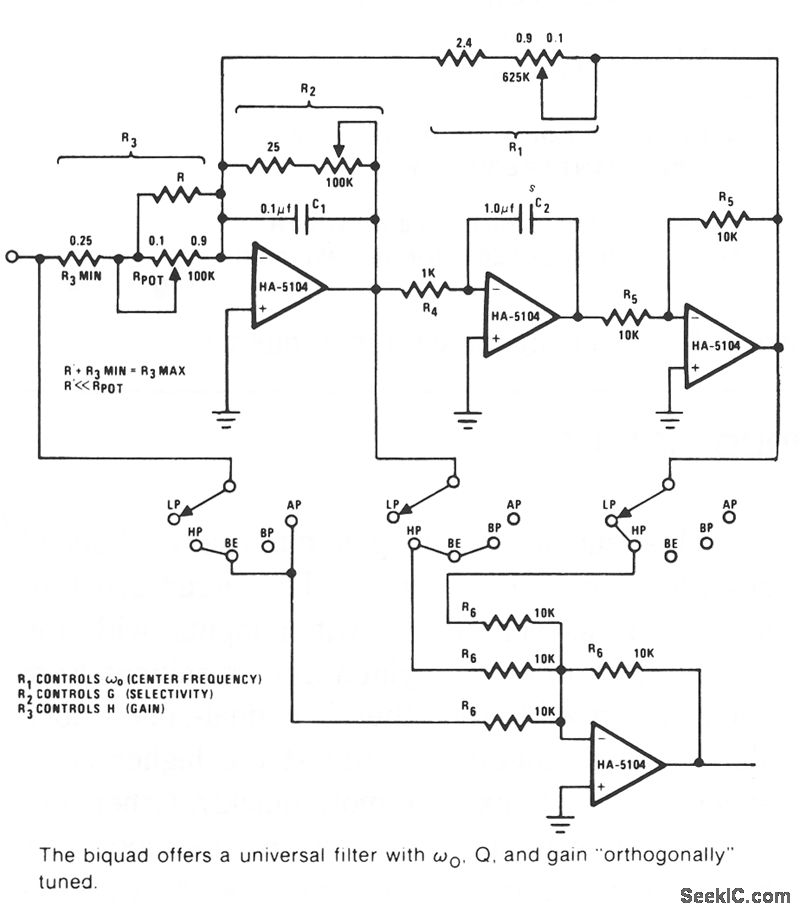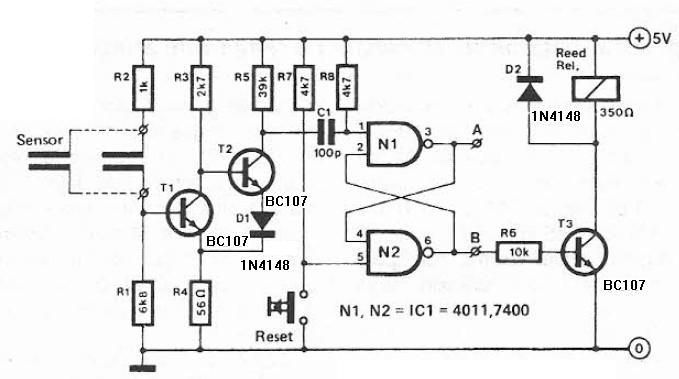
Tunable notch filter to suppress hum
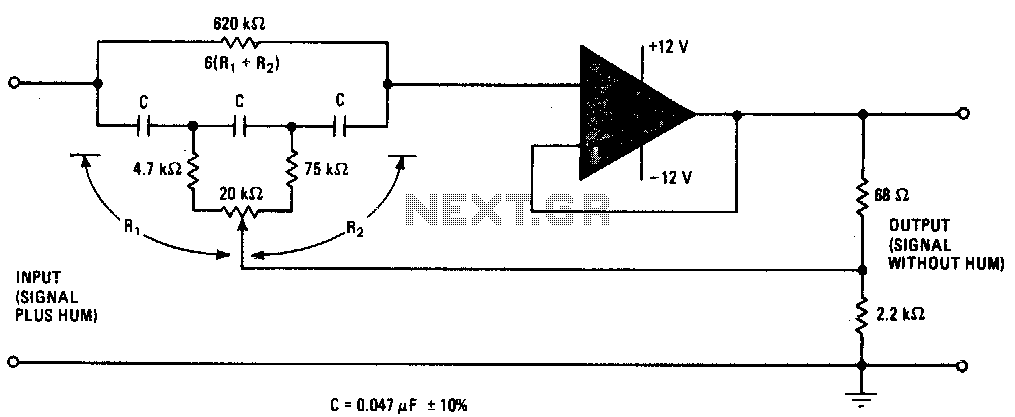
This narrow stop-band filter can be adjusted using a potentiometer to position the notch frequency anywhere from 45 to 90 Hz. It effectively attenuates power-line hum and other unwanted signals by at least 30 dB. The circuit is cost-effective to construct due to the use of wide-tolerance components.
The described narrow stop-band filter is designed to eliminate specific frequency components from an input signal, particularly targeting power-line hum, which often manifests at 60 Hz (or 50 Hz in some regions). The filter's adjustable notch allows for fine-tuning, accommodating variations in the frequency of unwanted signals, making it versatile for various applications.
The circuit typically consists of a combination of resistors, capacitors, and a potentiometer. The potentiometer serves as a variable resistor that alters the filter's characteristics, allowing the user to set the notch frequency precisely within the specified range of 45 to 90 Hz. This adjustability is crucial for applications where the exact frequency of interference may vary.
The filter's design may employ a second-order or higher-order topology to achieve the desired attenuation level of at least 30 dB. This level of attenuation is significant enough to reduce the impact of noise on sensitive audio equipment or other electronic devices.
The use of wide-tolerance components contributes to the overall affordability of the circuit. While high-precision components can offer better performance, they often come at a higher cost. By utilizing components with wider tolerances, the circuit can maintain a balance between performance and cost-effectiveness, making it accessible for hobbyists and professionals alike.
In summary, this narrow stop-band filter is a practical solution for mitigating unwanted frequency interference, particularly from power-line sources, while remaining economical and easy to implement in various electronic projects.This narrow-stop-band filter can be tuned by the pot to place the notch at any frequency from 45 to 90 Hz. It attenuates power-line hum or other unwanted signals by at least 30 dB Because the circuit uses wide-tolerance parts, it is inexpensive to build. 🔗 External reference
The described narrow stop-band filter is designed to eliminate specific frequency components from an input signal, particularly targeting power-line hum, which often manifests at 60 Hz (or 50 Hz in some regions). The filter's adjustable notch allows for fine-tuning, accommodating variations in the frequency of unwanted signals, making it versatile for various applications.
The circuit typically consists of a combination of resistors, capacitors, and a potentiometer. The potentiometer serves as a variable resistor that alters the filter's characteristics, allowing the user to set the notch frequency precisely within the specified range of 45 to 90 Hz. This adjustability is crucial for applications where the exact frequency of interference may vary.
The filter's design may employ a second-order or higher-order topology to achieve the desired attenuation level of at least 30 dB. This level of attenuation is significant enough to reduce the impact of noise on sensitive audio equipment or other electronic devices.
The use of wide-tolerance components contributes to the overall affordability of the circuit. While high-precision components can offer better performance, they often come at a higher cost. By utilizing components with wider tolerances, the circuit can maintain a balance between performance and cost-effectiveness, making it accessible for hobbyists and professionals alike.
In summary, this narrow stop-band filter is a practical solution for mitigating unwanted frequency interference, particularly from power-line sources, while remaining economical and easy to implement in various electronic projects.This narrow-stop-band filter can be tuned by the pot to place the notch at any frequency from 45 to 90 Hz. It attenuates power-line hum or other unwanted signals by at least 30 dB Because the circuit uses wide-tolerance parts, it is inexpensive to build. 🔗 External reference

